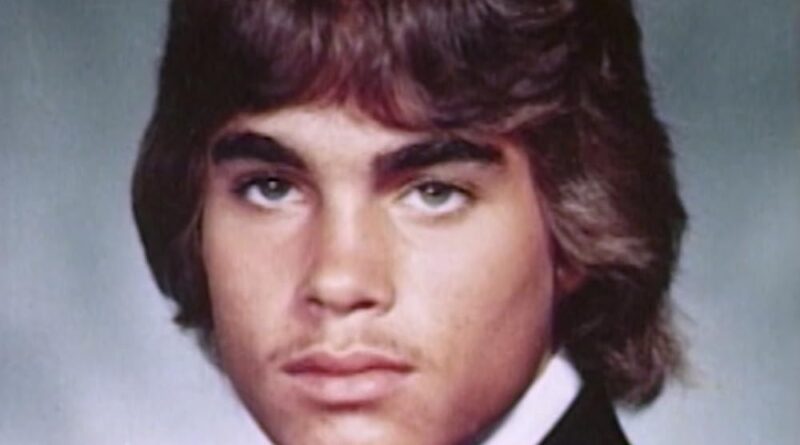Tim Molnar Goes Missing After Dropping His Brother Off to School in Daytona Beach Florida
On the morning of January 24, 1984, 19-year-old Timothy Michael “Tim” Molnar moved through a familiar routine in Daytona Beach, Florida. He was a first-year student at Embry-Riddle Aeronautical University, serious about engines and structure, calm in demeanor, and close with his family. After dropping his younger brother at school, he appeared to return home, gathered a few personal items, and then left again—apparently taking his bicycle along by loading it into his car. From that point forward, the ordinary day unraveled. No loved ones saw him again. What began as a brief errand from a quiet suburban house in Volusia County became a mystery that would stretch across years and states, weaving Daytona Beach into one of the more perplexing disappearances of the 1980s.
Who Tim Was—and Why That Matters
Tim was not a drifter or a thrill-seeker. He was an aviation student surrounded by structure—syllabi, shop hours, checklists. Those who knew him describe a bright teenager who was mechanically inclined and more comfortable with hands-on tasks than dramatic gestures. Understanding his temperament matters because it shapes how investigators and the public weigh possibilities: teenagers do run away, but a sudden voluntary flight tends to leave ripples—confidences shared with friends, money withdrawn, erratic behavior in the weeks prior. In Tim’s case, there was no obvious tell. He had a car, a routine, a family that expected him back for the usual rhythms of a school day. Whatever happened after he drove away did not fit the life he had been living.
The Last Confirmed Movements
The anchor points of the day are simple and chillingly mundane. In the morning, Tim drove his brother to school. Sometime afterward, he returned home. Evidence suggests he placed his bicycle into the vehicle—perhaps for exercise, perhaps to ride from a different location, or simply because the bike had become a casual passenger in the trunk on certain days. The presence of the bicycle later becomes crucial, because it disappears from the story while other items remain. With the bike stowed, Tim drove off again. There is no proof he told anyone precisely where he was going, and no witness statement—at least none publicly known—that captures a specific destination or appointment.
When Routine Becomes Alarm
Initially, there is rarely a flashing red siren in a case like this. As the day wore on, family members expected to see Tim, to hear from him about dinner or classes or errands. He did not return that afternoon. He did not show up that night. The following day, routine gave way to concern, and concern became alarm. A family calls friends, checks campus, retraces routes. A missing person report follows. In 1984, investigators did not have the instant reach of cell-site data and video grids; the first steps were still classic police work—canvassing, phone calls, workplace and school verification, neighbors who might have seen a car leave a driveway at a particular hour.
The Credit Card Clue and the First Long Drive
The first hard breadcrumb was financial: a same-day gasoline purchase struck the family as out of pattern. It was recorded far from Daytona Beach, at a station in Lake City, Florida—nearly 150 miles northwest and roughly along the corridor that leads out of the state toward Georgia. A teenager with a full tank of gas that far from home turns a missing-person worry into a geography problem. Investigators had to ask whether Tim was following a plan, chasing a whim, or already in the hands of someone else. The purchase suggested he, or someone using his family’s card, was on the road with determination. If it was Tim, he covered distance quickly. If it was not, then the mystery widened to include an unknown driver.
The Car in Atlanta—and What It Did and Didn’t Say
Six days later, Tim’s car turned up near the Greyhound station in downtown Atlanta, Georgia. The location matters: long-distance bus hubs serve as crossroads for people trying to go everywhere and nowhere. Inside the vehicle, police found his wallet and identification—odd if this was a theft, odder if he had simply decided to vanish. Missing from the car were the bicycle, the stereo, and his tool kit. Those absences point in two different directions at once. A stripped stereo and missing tools whisper of opportunistic theft after abandonment. The vanished bicycle suggests planning: if Tim—or someone with him—removed it, perhaps it was used or handed off elsewhere. But if a thief took the bike, why leave the wallet and ID? The discordant inventory raises the possibility that more than one person interacted with the car after it arrived in Atlanta.
The Silent Phone Calls
On the night he disappeared, the Molnar home reportedly received silent telephone calls—no voice on the other end, only presence. Families of the missing often face this particular cruelty, and the ambiguity can be paralyzing. Was it Tim, uncertain and frightened? Was it a prankster drawn by rumor? Was it someone exerting control, testing whether the family was home or the line tapped? In an era before ubiquitous caller ID, tracing such calls quickly was far more challenging. For investigators, the calls complicate the timeline by adding a potential actor who is neither seen nor heard, only inferred.
Geography, Probability, and the Open Road
Daytona Beach to Lake City to Atlanta describes a diagonal climb up the map, a route along major arteries crowded with anonymous vehicles and transient stops. On such roads, a teenager can pick up a ride, be offered a ride, or be compelled into one. A voluntary trip could have started with a simple premise—clear the head, visit a friend, see another campus, seek work. But the loss of contact, the abandoned car, the missing personal items, and the silence that followed make a benign interpretation difficult to hold. If foul play occurred, it might have begun at a gas station, at a rest area, or in the chaos of a big city bus terminal. Each environment offers opportunities for a predator and frays the evidence trail—especially in the 1980s.
Evidence That Travels—and Evidence That Doesn’t
Investigations hinge on what can be tied to a specific person, place, and time. The gas receipt fixes a time and city but not the driver. The car’s location fixes a city but not who parked it, when, or why. The wallet and identification tie the vehicle to Tim but do not tell whether he ever stood beside it in Atlanta. The missing stereo and tools suggest a post-arrival event—perhaps days later—confounding the timeline. The bicycle’s disappearance can be read as a clue of mobility or a token of theft. This mosaic is common in missing-person cases: items speak, but they speak in fragments.
Family, Community, and the Search
In Daytona Beach, the Molnar family and local community pushed the search into newspapers and flyers, leaning on the colleges and the local press to keep Tim’s face and story alive. In tight-knit communities, a missing teenager isn’t an abstract statistic; it is an empty chair at dinner and a ripple that touches churches, schools, and workplaces. Leads flickered in and out: a possible sighting here, a rumor there. Each required follow-up, exhausting time and energy while offering little certainty. For months, then years, the central questions remained unchanged: Why did he leave? How far did he go under his own power? Who met him on the way?
The Wisconsin Discovery and the Long Arc of Identification
Years after the January 1984 disappearance, far from Florida and Georgia, a startling development rewired the case’s geography. In rural Wisconsin, a body had been discovered in a secluded, wooded area—frozen in winter conditions and lacking immediate identification. For a long time, the remains were a separate mystery with their own local file. Eventually, advances in forensic science and the persistence of public attention linked the two narratives: the unidentified person in Wisconsin and the missing student from Florida. The identification of the remains as Tim’s closed one door with certainty—he had not chosen a new life—but opened another with a harder question: how did a Florida college student’s final chapter end in the upper Midwest?
Forensic Questions That Refuse Easy Answers
Even with identification, the manner and cause of death remained undetermined. That indeterminacy can result from decomposition, environmental exposure, or injuries that do not leave clear skeletal signatures. When manner is undetermined, motive usually remains in shadow. A homicide without a clear mechanism looks like an absence of answers, but it still guides investigators: you ask who could move a person across such distances, who had means and opportunity on the travel corridor, and who benefited from silence. You revisit Atlanta’s bus terminal for patterns—names that surface in other crimes, routines of traffickers or violent offenders operating at the time. You test the Wisconsin site against hunting seasons, logging routes, and local movements that might explain how and when someone could deposit a body unseen.
Theories, Weighed with Care
Several broad hypotheses recur:
- Voluntary travel that intersected with danger. Tim may have left Daytona Beach to clear his head or to see someone and encountered predation on the road or in a city hub.
- Coercion or abduction during transit. An encounter at a gas station or rest area could have redirected his journey rapidly and left him without the chance to seek help.
- Multiple-actor chain. One person could have driven or abandoned the car in Atlanta while another later stripped items from it, muddying the evidence and masking the true timeline.
- Interstate criminal network. The cross-state trajectory, the bus terminal setting, and the final recovery location invite scrutiny of organized activity that used highways and depots as cover.
These possibilities are not mutually exclusive, and responsible analysis avoids forcing a neat narrative where the record is ambiguous. What ties them together is movement, anonymity, and timing.
Why the Case Still Resonates
The disappearance of Tim Molnar speaks to a universal fear: that an ordinary morning can twist into the unimaginable without warning. It also captures an investigative era on the cusp of transformation. Had the same events unfolded decades later, surveillance cameras, license-plate readers, and phone location data might have rapidly reconstructed the route from Daytona Beach to Atlanta and beyond. In 1984, families and detectives had to rely on receipts, tips, and patience. The case therefore stands as both a tragedy and a lesson in how gaps in time and technology can shape the fate of a search.
A Timeline in Plain Language
- Morning of January 24, 1984: Tim drives his brother to school in Daytona Beach, returns home, then leaves again—likely with his bicycle in the car.
- Later that day: A gasoline purchase tied to the family appears in Lake City, Florida, pointing north and west.
- Six days on: Tim’s car is located near the Greyhound station in Atlanta. Wallet and identification remain; the bicycle, stereo, and tool kit are gone.
- Subsequent months and years: Leads grow thin, the family endures silence, and the mystery fans out across three states.
- Later development: Human remains recovered in rural Wisconsin are eventually identified as Tim’s, confirming death but not the exact path or cause.
The Human Center of a Cold Case
It is easy to drown in the puzzle pieces—receipts, mileage, inventories, maps—and forget the person whose life vanished between them. Tim was a son and a brother, an aviation student with a mind for machinery and a future measured in semesters and certifications. The disappearance did not only remove him from a dinner table; it removed him from the aircraft he might have built, the friendships he might have grown, the family he might have formed. Cold cases can feel clinical; they should not. Each unanswered question rests on a human absence.
What Might Move the Needle
Historical cases sometimes break open when small, overlooked facts are reweighted by new tools. Re-examining the vehicle with contemporary forensic techniques (if preserved), re-interviewing witnesses who were near the Lake City station or the Atlanta terminal, and cross-referencing transportation hub incident reports from that week with known offenders can all help. Public appeals tied to specific places and dates—“Were you working near the Atlanta terminal in late January 1984?”—can still stir memories. And in the era of genetic genealogy, even partial, degraded samples or objects recovered near the Wisconsin site may yet surface associative leads.
A Case Defined by Distance—and by Hope
From Daytona Beach to Lake City to Atlanta to rural Wisconsin, the map of Tim Molnar’s disappearance draws a long diagonal across the American heartland. Distance frustrates investigation; every new jurisdiction resets the learning curve and stretches scarce resources. Yet distance also keeps hope alive, because people remember different things in different places. Someone filled a tank, someone saw a bicycle removed from a car, someone noticed a Florida plate idling at a curb. In long cases, answers often lie with peripheral witnesses who never realized they were part of the story.
Closing Thoughts
The disappearance of Tim Molnar on January 24, 1984, began as a Florida family’s worst fear and evolved into a multistate riddle. The known fragments—an early-morning drive, a fuel stop far from home, a car left by an Atlanta bus station, and a life ultimately traced to a Wisconsin wood—remain stubbornly unaligned. Yet each fragment still invites attention. The case endures because it is not only about evidence; it is about a young man caught in the space between routine and catastrophe, and about the enduring will of family, investigators, and communities to pull the past into clarity.
Discover more from City Towner
Subscribe to get the latest posts sent to your email.




